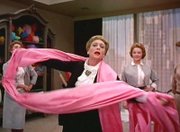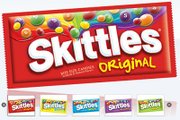Think Pink!
Somebody get Pantone on the phone. There is no pink. I repeat, there is no pink.
That alarming (and technically false) information was rattling around the Internet recently after two science reporters Michael Moyer (one of the hosts of NPR’s Radiolab show) and Robert Krulwich (writing for Scientific American) kicked off a debate about the properties of pink.
Moyer stated—truthfully--that pink does not appear in the light spectrum of red, orange, yellow, green, blue violet (known to those of you who studied color theory as Roy G. Biv). Ergo there is no pink.
Krulwich said balderdash (in a manner of speaking). Yes, it’s true, Krulwich said, there is no single wavelength of light for pink in the light. But, he adds, you can make it by mixing red and purple light. Moyer argues that you can’t do that. Krulwich says yes, you can. Science writer fight ensues and we’re still wondering why we see pink.
PopSci explains:
“Here’s the thing: When you look at a pink object — that is to say, a thing that contains pigments or dyes which render it pink to light receptor cells in your eyes — you are not seeing pink wavelengths of light. An object appears pink because certain wavelengths of light are reflected, and others are absorbed, quenched, by the pigments. Pink is a reflective color, not a transmissive color — you can perceive it because your brain translates light bouncing off it. Color is a construct of our eyes and brains.”
Whoa.
So all of you who’ve been including pink in the rainbow are wrong. I went to the source—Skittles, the Wrigley candy with the tagline “Taste the Rainbow,” and, indeed, there is no pink the Skittles original lineup. (For the record, pink makes an appearance in the Skittles Blenders and Tropical flavors, and I suppose you could say pink appears in the Wild Berry and Sour flavors, but really, it’s mauve.)
The upshot is, Kay Thompson was spot on in “Funny Face,” when she said “Think Pink!”
























